| September 10, 2008 |  |
MarsDaily Advertising Kit |
| Previous Issues | Sep 09 | Sep 08 | Sep 05 | Sep 04 | Sep 03 |
Mars Valleys Formed During Long Period Of Episodic Flooding Santa Cruz CA (SPX) Sep 09, 2008
Santa Cruz CA (SPX) Sep 09, 2008A new study suggests that ancient features on the surface of Mars called valley networks were carved by recurrent floods during a long period when the martian climate may have been much like that of some arid or semi-arid regions on Earth. An alternative theory that the valleys were carved by catastrophic flooding over a relatively short time is not supported by the new results. ... more Rosetta Swings By Asteroid Steins 2867 On Route To Comet Churyumov  Paris (AFP) Sept 5, 2008
Paris (AFP) Sept 5, 2008A European spacecraft racing through the asteroid belt skimmed past a 10-kilometre (six-mile) space rock on Friday to carry out its first scientific work in a decade-long trek into the Solar System, mission controllers said. In a minutely choreographed operation, the one-billion-euro (1.45-billion-dollar) unmanned probe Rosetta - launched in 2004 by the European Space Agency ... more Spirit Still Biding Time  Pasadena CA (JPL) Sep 05, 2008
Pasadena CA (JPL) Sep 05, 2008Spirit continues to ride out the Martian winter by doing minimal activities to conserve power. The rover completes very light science observations every three to four Martian days, known as sols, and relays data to NASA's Odyssey orbiter to be transmitted to Earth every four sols. Otherwise, Spirit mostly sleeps. This pattern is not likely to change until sunlight on the rover's solar ... more Spiky Probe On Phoenix Raises Vapor Quandary  Tucson AZ (SPX) Sep 05, 2008
Tucson AZ (SPX) Sep 05, 2008A fork-like conductivity probe has sensed humidity rising and falling beside NASA's Phoenix Mars Lander, but when stuck into the ground, its measurements so far indicate soil that is thoroughly and perplexingly dry. "If you have water vapor in the air, every surface exposed to that air will have water molecules adhere to it that are somewhat mobile, even at temperatures well below freezing ... more Opportunity To Exit Victoria Crater  Pasadena CA (JPL) Sep 05, 2008
Pasadena CA (JPL) Sep 05, 2008Like a backpacker hiking up a steep grade, Opportunity has been trying to gain elevation using a "switchback" approach inside "Victoria Crater." The rover's goal was to zigzag back and forth across a steep slope toward an outcrop nicknamed "Nevada," where scientists had hoped to do scientific analysis and collect high-resolution, panoramic images of the cliff face known as "Cape Verde." ... more |
esa-general
 mars-phoenix 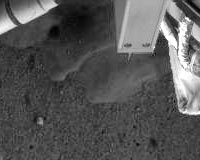 mars-phoenix 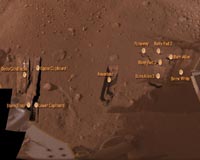 |
 Pasadena CA (JPL) Sep 03, 2008
Pasadena CA (JPL) Sep 03, 2008Opportunity faces several challenges on the way out of "Victoria Crater" but continues to make steady progress. The first of these is a traverse of approximately 10 meters (30 feet, a little longer than a double-decker bus) across a sandy, 17-degree slope. Opportunity is more than halfway through that part of the journey. The next is a drive across 30 to 50 meters (100 to 160 feet) ... more Giant Telescope Mirror Blank Is Perfect  Tucson AZ (SPX) Sep 03, 2008
Tucson AZ (SPX) Sep 03, 2008The single-piece primary and tertiary mirror blank cast for the LSST is "perfect", say project astronomers and engineers. The LSST, or Large Synoptic Survey Telescope, a large survey telescope being built in northern Chile, requires three large mirrors to give crisp images over a record large field of view. The two largest of these mirrors are concentric and fit neatly onto a single mirror ... more Mars Research In Polar Bear Country  Moffett Field CA (SPX) Sep 02, 2008
Moffett Field CA (SPX) Sep 02, 2008Hans Amundsen is a Norwegian geologist and the expedition leader of AMASE (Arctic Mars Analog Svalbard Expedition). AMASE is an international, interdisciplinary scientific research project that since 2003 has traveled to Svalbard, a group of islands in the High Arctic that provides some of the best sites on Earth for doing Mars-related field research. Among the most valuable geologic ... more Taking The Opportunity To Escape From Crater Victoria  Pasadena CA (JPL) Sep 01, 2008
Pasadena CA (JPL) Sep 01, 2008NASA's Mars Exploration rover Opportunity is heading back out to the Red Planet's surrounding plains nearly a year after descending into a large martian crater to examine exposed ancient rock layers. Opportunity will continue its mission to characterize the environment of Mars and help scientists determine if the planet could have been a habitat for past life in our solar system. "We've do ... more |
mars-phoenix
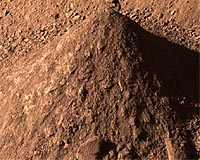 mars-mers 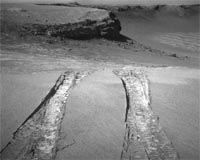 mars-atmosphere 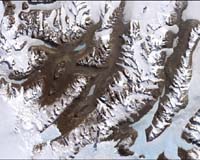 |
 Tempe AZ (SPX) Aug 29, 2008
Tempe AZ (SPX) Aug 29, 2008New pictures from NASA's Phoenix Lander show just what a busy summer the spacecraft on Mars - and its science team at The University of Arizona in Tucson - has been having. During the first 90 Martian days, or sols, after its May 25, 2008, landing on an arctic plain of Mars, the lander dug several trenches in the workspace reachable for its robotic arm. The lander's Surface Stereo ... more Fresh From Mars: Scientist To Describe H20 Discovery  Dallas TX (SPX) Aug 28, 2008
Dallas TX (SPX) Aug 28, 2008Water on Mars? Scientists suspected the presence of H2O on the surface of our planetary next-door neighbor, but it took a series of tests and University of Texas at Dallas Professor John Hoffman's instrument aboard NASA's Phoenix Mars Lander to prove it. Hoffman will tell audiences at the Museum of Nature and Science on Aug. 30 how he and his team made one of this century's first major ... more NASA's Mars Rover Opportunity Climbing Out Of Crater  Pasadena CA (SPX) Aug 27, 2008
Pasadena CA (SPX) Aug 27, 2008NASA's Mars Exploration rover Opportunity is heading back out to the Red Planet's surrounding plains nearly a year after descending into a large Martian crater to examine exposed ancient rock layers. "We've done everything we entered Victoria Crater to do and more," said Bruce Banerdt, of NASA's Jet Propulsion Laboratory in Pasadena, Calif. Banerdt is project scientist for Opportunity and ... more Ice Cold Sunrise On Mars  Tempe AZ (SPX) Aug 27, 2008
Tempe AZ (SPX) Aug 27, 2008From the location of NASA's Phoenix Mars Lander, above the Martian arctic circle, the sun does not set during the peak of the Martian summer. This period of maximum solar energy is past -- on Sol 86, the 86th Martian day after the Phoenix landing, the sun fully set behind a slight rise to the north for about half an hour. This red-filter image taken by the lander's Surface Stereo ... more
|
asteroid
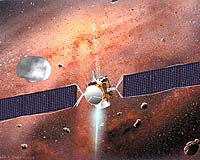 mars-dust 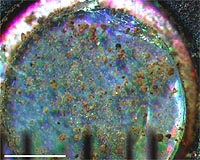 mars-phoenix 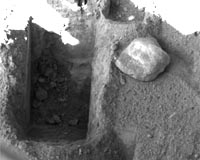 |
| Previous Issues | Sep 09 | Sep 08 | Sep 05 | Sep 04 | Sep 03 |
| The contents herein, unless otherwise known to be public domain, are Copyright 1995-2007 - SpaceDaily. AFP and UPI Wire Stories are copyright Agence France-Presse and United Press International. ESA Portal Reports are copyright European Space Agency. All NASA sourced material is public domain. Additional copyrights may apply in whole or part to other bona fide parties. Advertising does not imply endorsement, agreement or approval of any opinions, statements or information provided by SpaceDaily on any web page published or hosted by SpaceDaily. Privacy statement |